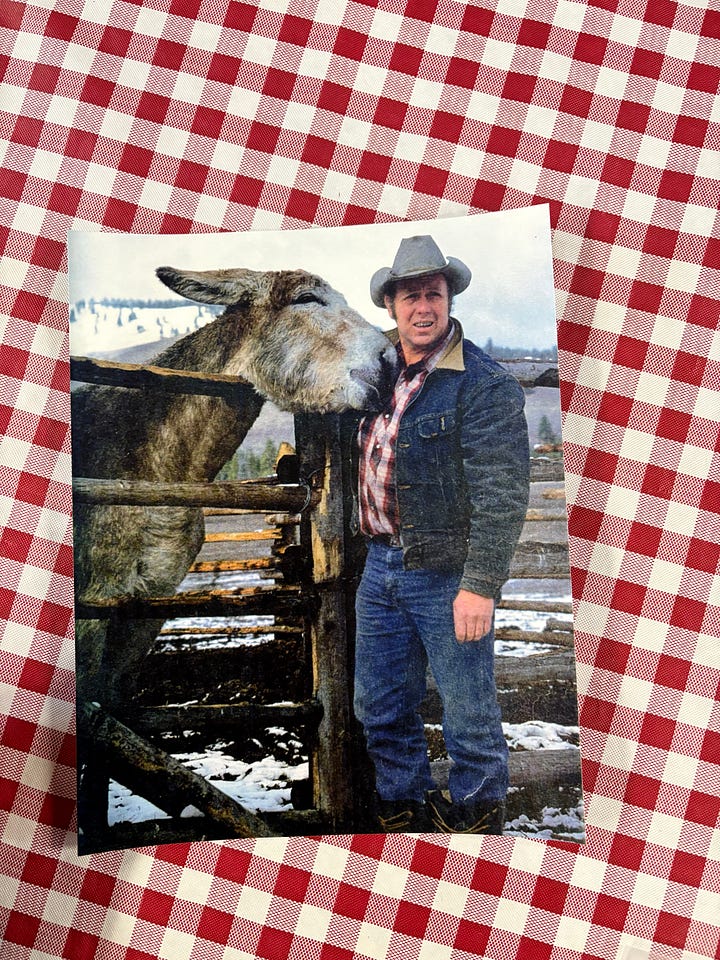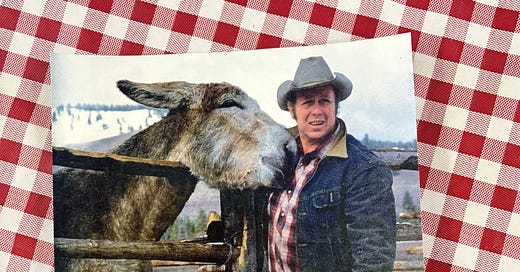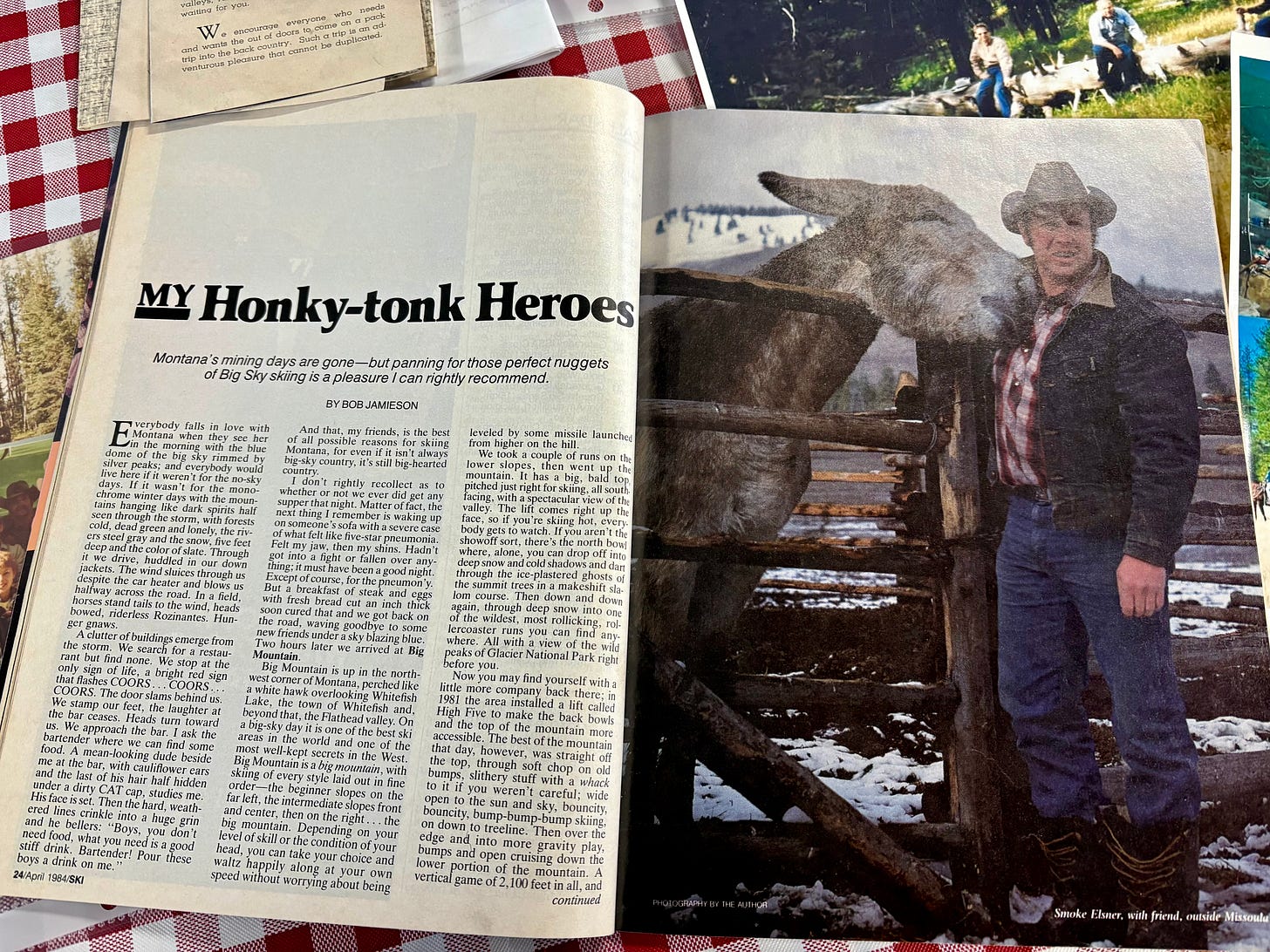A 'Honky-Tonk' Hero Walks Into a Barn
How Smoke made it into SKI Magazine & our upcoming event in Ovando
You never know what you'll find when you step into Smoke’s Barn. A U.S. Senator sipping coffee, a former chief of the U.S. Forest Service studying an old fire map, or a group of kids eager to learn how to pack a mule. The last time I visited—just a day before leaving for Germany—Smoke was adding photos to his collection, and I was surprised to find a ski magazine beside him.


“I liked to ski every now and then,” he explained in his matter-of-fact way, as if a skiing mule packer were the most natural thing in the world. But taking a few turns at the local ski hill hardly explained why the April 1984 issue of SKI Magazine featured Smoke in a five-page article with the intriguing—but utterly bewildering—title “My Honky-Tonk Heroes.”
“I don’t know why,” Smoke elaborated with a brief shrug. “He just drove up to the barn one day, took a few pictures, and left. I think he was drunk.”
Famously, Smoke and Thelma never had to advertise their business—most of their guests heard about the pack trips into the Bob Marshall Wilderness through friends and family. In addition, the news media loved writing about Montana, packing, and Smoke. Over the years, The New York Times, The Washington Post, National Geographic, The Guardian, and many others published features, often accompanied by glossy photos of mules and horses against mountain and lake backdrops. But SKI Magazine?
Founded in Seattle and continuously published since January 1936, SKI is America’s first independent commercial ski magazine1 (International Skiing History Association). For years, it was the leading authority on all things skiing, featuring other, equally intriguing articles like “Ski, She, and Chi-Chi” (February 1941) and “Sherlock Holmes—Ski Pioneer” (January 1951). Since 1971, the magazine has changed ownership multiple times but remains in print today under Outside Interactive, the parent company of Outside, RUN, and Trail Runner, some of America’s most widely circulated outdoor recreation publications.
Starting to read the piece about Smoke, I quickly realized he was right—the only thing the writer seemed more interested in than skiing was drinking. Various bars along the road were featured as prominently as his mostly positive reviews of Montana’s ski areas. Ticket prices ranged from as low as $5 at Beef Trail in Butte (closed since 19902) to $19 at Big Sky (now $250).
A large color photo of a younger Smoke rubbing the ears of Jack—his favorite male donkey, bought in Kansas (see Hush of the Land, Chapter 8, "Teaching the Ropes," about Jack’s journey to Montana)—was prominently featured on the first page. Strangely, neither he nor the Wilderness Outfitters business was mentioned much in the article.
He didn’t mind.
“Any free advertisement is great,” he remarked dryly.
Leading a pack string on backcountry trails, you learn to expect the unexpected around every turn. Compared to a spring snow slide (Chapter 6, “A Grizzly Ride and the Great Bear”), a grizzly bear in the fall (Chapter 3, “Early Hunting”), or a lost hunter on a rainy night (Chapter 14, “Shot in the Dark”), a drunk writer with a camera showing up at the barn in winter was hardly news. But Smoke surely appreciated it when, a few months later, a copy of the magazine and a picture arrived in the mail—proof that even the strangest encounters had a way of making their mark.
Auf bald,
Eva
Upcoming events
International Skiiing History Association, for SKI magazine back issues see, https://www.skiinghistory.org/resources/ski-magazine-back-issues-and-index-1941-1993
For a great documentary on the history of Beef Tail see https://www.pbs.org/video/beef-trail-a-pioneering-montana-ski-area-1phmwa/





